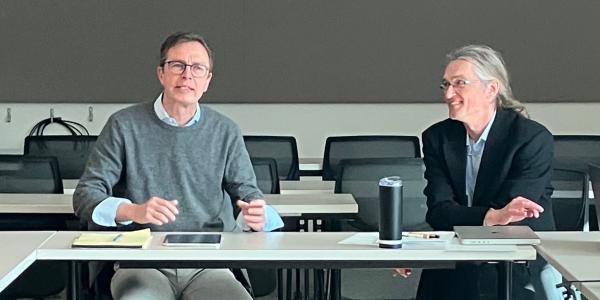A recently published paper co-authored by CU Boulder’s Fernando Villanea offers new insights into what happened to the populations of Central Mexico a millennium ago
Between 1,100 and 900 years ago in modern-day Mexico, a series of droughts spurred on by global warming forced the nomadic hunter-gatherers of Aridoamerica to migrate south into the more verdant Mesoamerica, geographical home of the Aztecs and Mayans.
Until recently, archaeologists assumed that, over time, these hunter-gatherers replaced their agricultural neighbors to the south. Yet that assumption was rooted solely in archaeological evidence, which, according to CU Boulder Assistant Professor of Archaeology Fernando Villanea, can be tricky to interpret.
“There’s always a problem when it comes to looking at archaeological remains, when you think there is a chance of two different groups of people going into each other,” Villanea says.
“You find artifacts layered in time, and then you see them change, and you don’t really know what’s happening. You don’t know if these people are merging. You don’t know if one group is replacing the other. You don’t know if one group is learning from the other.”

Approximately 1,000 years ago, global warming caused the border between Aridoamerica and Mesoamerica to shift south. The hunter-gatherers who lived in Aridoamerica consequently moved south as well. Image from “Demographic History and Genetic Structure in Pre-Hispanic Central Mexico.”
But a recently published paper co-authored by Villanea brings new evidence to bear on the question of who replaced whom in Central Mexico a thousand years ago—or whether anyone was replaced at all.
“Demographic History and Genetic Structure in Pre-Hispanic Central Mexico,” published May 12 in Science, reveals that the genetic structure of people as far back as 1,400 years ago strongly resembles that of people living in Central Mexico today—a finding that all but disproves the population-replacement hypothesis.
“The genetic results say that these two groups of people’’—the Aridoamericans and the Mesoamericans—“probably just merged into each other,” says Villanea.
For the study, Villanea and his colleagues compared the DNA of people who lived along the Mesoamerican northern frontier before the onslaught of droughts with people who lived in the same area after the droughts.
The DNA itself came from the subjects’ bones.
“Your bone is living tissue, and it’s constantly repaired,” Villanea explains. “As you grow, you make more bone, and when you make that bone, a lot of cells get stuck between the bone layers. And it turns out, that is a perfect chemical condition to preserve DNA for a long time.”
This preserved DNA taught Villanea and his colleagues that the genetic structure of the people of Central Mexico has had much greater continuity than once thought.
But that’s not all it taught them. It also turned up two strands of previously unknown “ghost DNA,” or DNA that can be found in ancient remains but not in people alive today.
Ghost DNA is a common phenomenon, Villanea says, and when it shows up, there are two possible explanations.
The first is that there are living people who share the ghost DNA but whose genes simply haven’t been sampled, and the other is that the original owners of the ghost DNA didn’t leave any descendants. Because scientists have made so much progress sampling DNA from all over the world, Villanea believes the latter explanation is likelier.
In the case of Villanea’s study, the two strands of ghost DNA, having never before emerged, add new layers of complexity to the demographic history of Central Mexico, which Villanea says is exciting.
Yet what he finds perhaps even more exciting are not the study’s findings themselves but how the study was done.
“The real story is that this was a group of Mexican scientists who did all the ancient DNA sequencing in Mexico, in their own labs, and they were able to tell the story of the people of Mexico for themselves.”

Assistant Professor of Archaeology Fernando Villanea.
Often, Villanea says, projects like this are done via “helicopter research,” whereby researchers from the Global North fly into lower-income countries, collect samples and return home to publish their findings, all without consulting local scientists or providing any benefit to local communities.
Villanea and his colleagues took a different approach.
“This is the first time that we’ve seen a major study come from a lab in a country outside the Global North,” he says. That lab is the International Laboratory for Human Genome Research at Universidad Autónoma de Mexico.
Villanea adds that, for him, the research process was “amazing.”
“Out of the 27 authors, most of us are Latin American. All the email correspondence was in Spanish, which is something I’ve never experienced before.”
He smiles when he thinks about it. “It’s a huge win for Mexico.”



